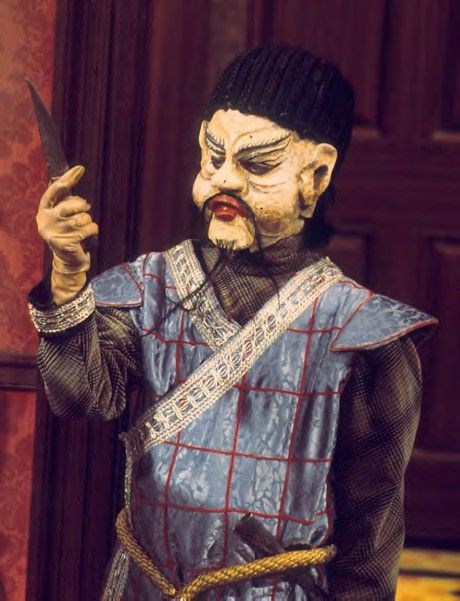
The Talons of Weng-Chiang
A cadaverous, skull-like face… Hoarse, laboured breathing… The hand that projects from the cloak could belong to a skeleton… Back when the Doctor was a dashing, white-haired action man attached to the Earthbound UNIT organisation, his arch-enemy the Master was a dapper figure with a well-trimmed beard, dressed in a smart, high-collared suit. When the Master returned in The Deadly Assassin, however, he was as scriptwriter Robert Holmes described him in the stage directions above: a fetid near-corpse from the deepest vaults of Gallifrey, bulging eyeballs staring out from under a ragged cowl.
In its 1976-77 season, Doctor Who became more horrible than ever before, despite the fact that the old monsters we loved to hate were nowhere to be seen: no Daleks or Cybermen or Sontarans. This was a deliberate choice on the part of producer Philip Hinchcliffe, who wanted to make the Doctor’s enemies more real, and therefore even more frightening. “A race of monsters of the ‘rubber suit’ variety tends to lean on the writer for believability,” he explained. “If you have just one villain either under a mask, or with elaborate make-up, then you have both the writer’s lines and the actor’s talent to bolster the performance.” Robert Holmes pointed out that The Deadly Assassin was “the first story, if you discount the Master, that we struck the ‘received law’ that every Doctor Who story had to have a monster. There were no monsters and The Deadly Assassin was very popular.” Its nastier moments didn’t make it popular with clean-up TV campaigner Mary Whitehouse, though.